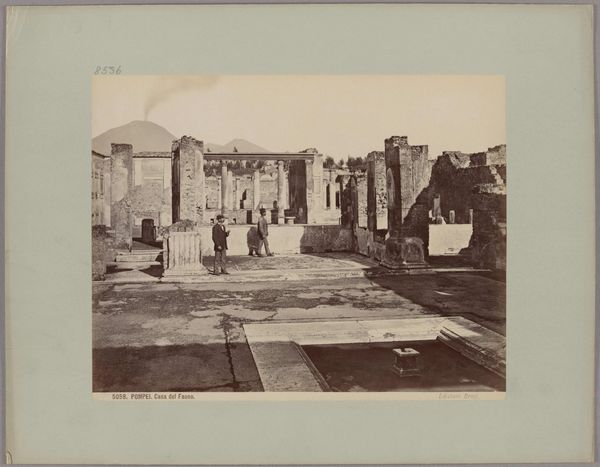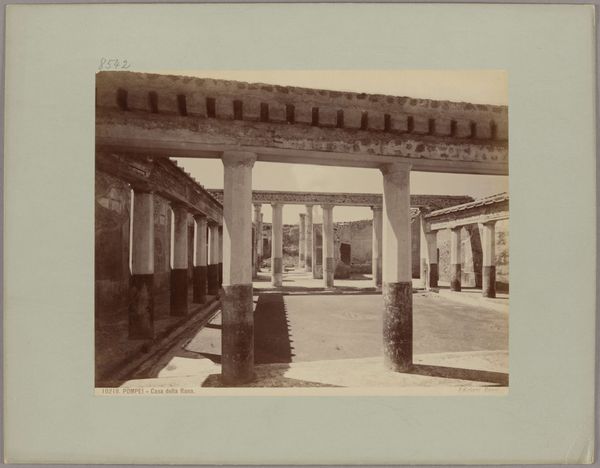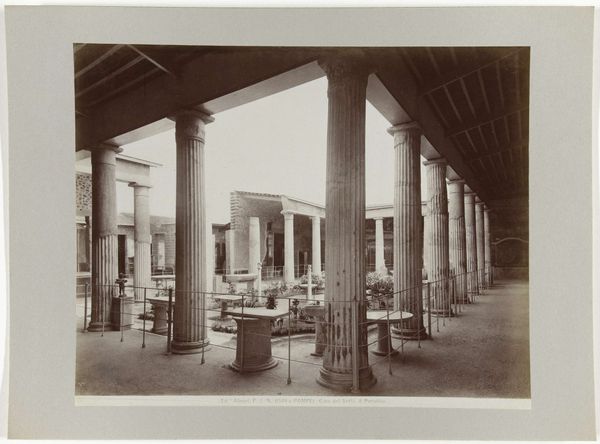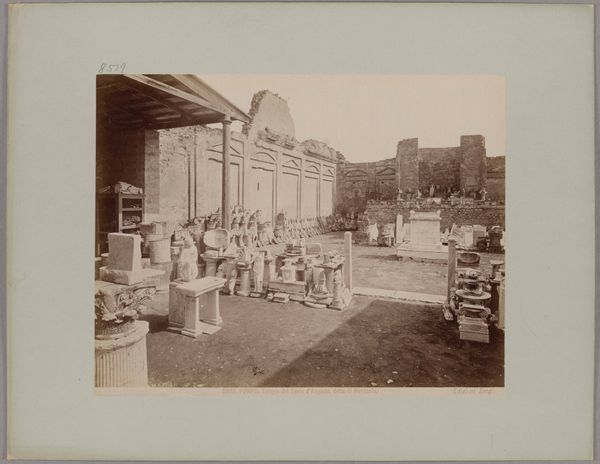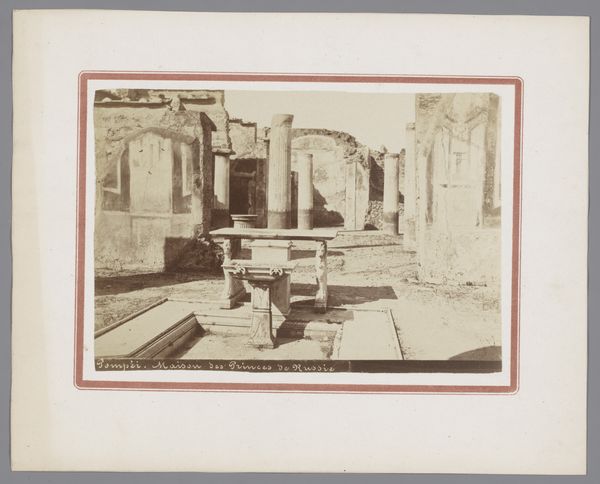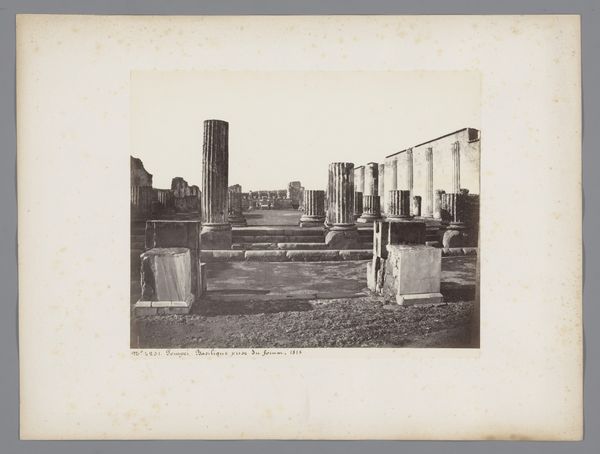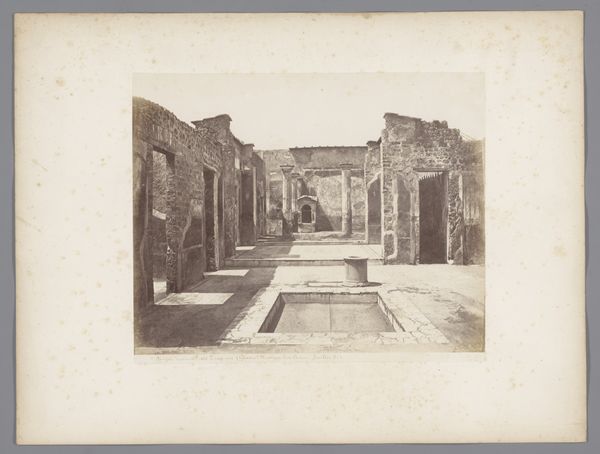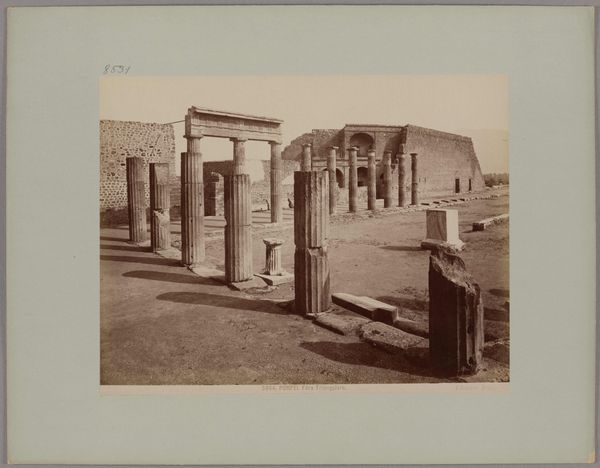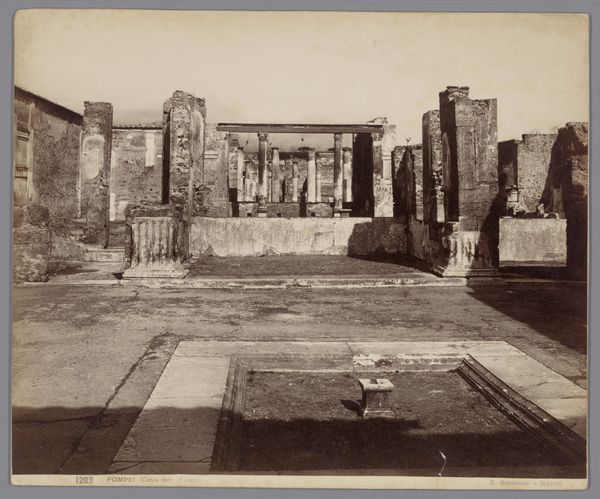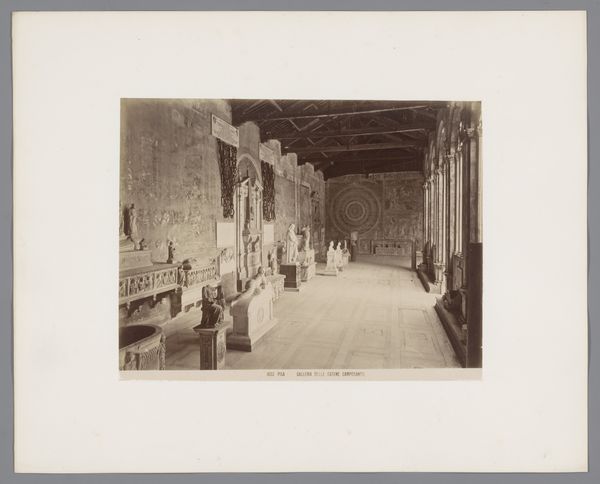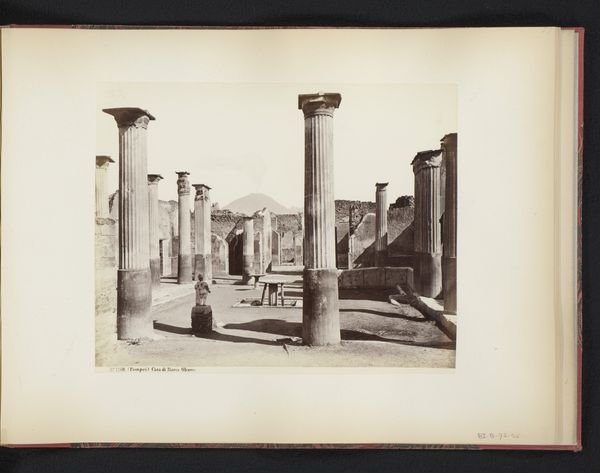
Pompeii_ Domus Vettiorum, View of the Peristyle, No. 10439 c. 1880 - 1890
0:00
0:00
albumen-print, paper, photography, albumen-print, architecture
#
albumen-print
#
greek-and-roman-art
#
landscape
#
paper
#
photography
#
ancient-mediterranean
#
column
#
albumen-print
#
architecture
#
realism
Copyright: Public Domain
Curator: This photograph by Giacomo Brogi, dating from around 1880 to 1890, shows a view of the peristyle in the Domus Vettiorum, Pompeii. The image is an albumen print. Editor: It has such a serene, almost ghostly feel, doesn't it? The warm tones soften the stark ruins. I'm immediately struck by the heavy shadow work contrasting with areas brightly exposed with natural light that must've saturated this courtyard. Curator: Indeed. The albumen process allows for incredibly fine detail. Brogi likely saw value in documenting the space at the domestic scale in order to allow access through commercial photographs that were made readily available to traveling, largely elite, European audiences at the time. Think about the labor involved in creating these prints versus painting or even other early photography methods! Editor: Absolutely. And when we talk about that audience, consider the cultural context: the fascination with classical antiquity interwoven with the colonial gaze. Viewing these remnants not just as archaeological sites, but symbols of empire and legacies of power and how that power was made accessible for consumption via mass printing and sale. Curator: The framing is also deliberate, directing our eyes toward the repeated verticals of the columns. I am really appreciating his strategic placement. These would've originally been spaces for commerce and conversation among working peoples that inhabited Pompeii at the time. It causes a strange kind of dissonance within my sensibilities when viewed within its contemporary conditions as essentially now vacant property under tourist watch. Editor: And even more jarring given what we know transpired there. We look at these aesthetically pleasing ruins, partially rebuilt and preserved, but the history embedded within those materials speaks to a cataclysmic event, which also has political meaning, the fragility of life and systems of governance that would allow such an occurrence to wreak utter havoc on communities and their structures of living. Curator: The photograph's texture invites consideration of not just Brogi's methods but the history of Pompeii's excavation and preservation. We get the weight of the materials, what these prints communicate across time. Editor: Precisely. The Domus Vettiorum presented through Brogi's lens serves as a quiet testament to interconnected history, consumption, power, and human resilience, captured within a specific cultural context and distributed widely in the same process. Curator: I think looking at this photo reminds us how material processes have contributed to both access to, and shaping perceptions of, the past, but that the historical social conditions continue to affect its use. Editor: Definitely. It compels us to consider what stories we continue to circulate and which voices we amplify within them.
Comments
No comments
Be the first to comment and join the conversation on the ultimate creative platform.
